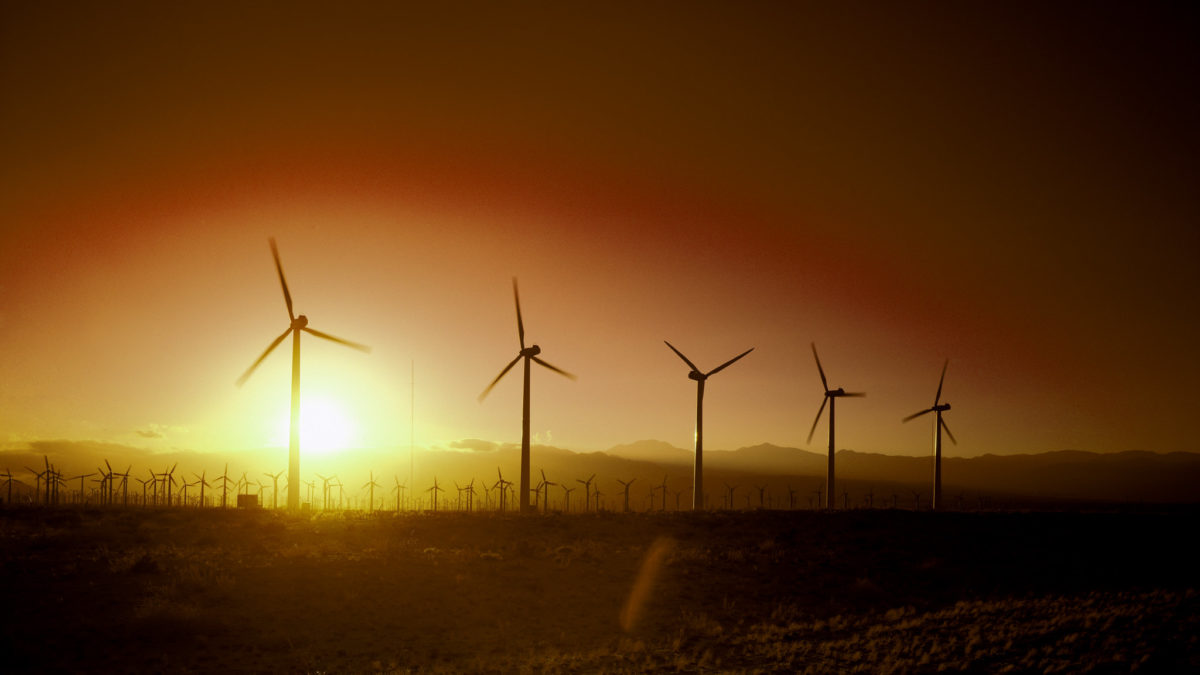Policies that make energy scarce and expensive, promoted by wealthy elites, result in domestic unrest while diminishing a nation’s ability to vigorously pursue its national interests. Since 2011, this has been the case in Egypt, France, Kazakhstan, Germany, and others. Even California and Texas are grappling with similar problems.
Texas is approaching the one-year anniversary of its epic four-day electrical blackout, triggered by a polar vortex bringing record cold and freezing rain, but exacerbated by the state’s growing dependence on federally subsidized unreliable wind and solar.
That conservative Texas, America’s energy capital, isn’t immune to the trendy push to decarbonize at all costs, should be a warning that the forces of energy chaos are formidable. Decades of federal subsidies for wind and solar have caused those resources to be overbuilt in the Lone Star State, leading to extreme price volatility and distorted, sometimes even negative, wholesale prices.
Texas’s energy-only market relies on prices alone to incentivize new investment, and subsidies for more variable energy mean that the reliability of coal, natural gas, and nuclear is not properly valued. As a result, year after year, wind and solar capacity grow while coal and natural gas generation atrophy.
As this happens, the grid becomes more and more prone to blackouts — unless backup power sources are constructed. The question is, who pays? So far, reliability costs have been borne by consumers, giving unreliable wind and solar generators a free ride to produce electricity whenever they can and not paying for the cost of backup power or other costs arising from their volatility.
If the Public Utility Commission of Texas fails to properly account for these costs and assign them to wind and solar generators, in a few short years, this cost will become noticeable to voters, who likely won’t riot but will pay closer attention to energy issues. Higher costs and blackouts tend to do that to the average voter.
See Egypt, Kazakhstan, and France
The 2011 revolution that toppled Egypt’s long-time president, Hosni Mubarak, was triggered by technocrats who argued the regime could no longer subsidize the cost of food staples and cooking gas. The heavy energy subsidies encouraged a vigorous black-market trade as people made money by reselling natural gas and butane at market prices.
Much the same happened in Kazakhstan over the past month as officials struggled to improve an economy rife with corruption and inefficiencies. There, the government had heavily subsidized cheap, locally produced natural gas, which encouraged citizens to convert their vehicles to run on it. The subsidies became unaffordable to the government and were ended. Within weeks, violent street protests came close to overthrowing the government, with Russia leading a regional security force to put down the revolt.
Rising prices, fed by energy shortages made worse by policies intended to address climate change, are one big factor in a 244 percent increase in riots and anti-government demonstrations worldwide over the past decade. Such unrest isn’t confined to poor, developing nations.
In November 2018, the mouvement des gilets jaunes or “Yellow Vest” protests erupted in France. Their foremost demand: lower fuel taxes. In the name of fighting climate change, the government of President Emmanuel Macron had announced a 25 cents-per-gallon increase in gas taxes and 10 cents for diesel. That was on top of $7.06 per gallon gas, almost half of which is taxes. In less than a month, the French government reversed itself, but the Yellow Vest protests continued until Covid-19 shut them down.
Germany’s Failed Greening
Germany is a particularly vexing example of how political expediency can drive an entire nation off an obvious policy cliff. Germany made an early push to decarbonize (called Energiewende) while also decommissioning its nuclear power plants. This effort has placed Germany — and western Europe, by extension — at the mercy of Russian natural gas.
As recently as 1990, nuclear power generated almost 30 percent of Germany’s electricity. Last year, only 13.3 percent of German electricity generation came from nuclear power, with half of the remaining plants shut down in December. By the end of 2022, Germany will cease producing nuclear power.
The demand to end nuclear power in Germany was led by that nation’s Green Party, itself a product of Cold War fears over nuclear war. Even today, the triple party alliance that governs Germany — Social Democrats, Greens, and the Free Democratic Party — has opposed a European Union draft plan to label nuclear power as sustainable energy, putting Germany at odds with France, the Czech Republic, and Poland, among others.
Germans had been closing their coal-fired power plants, with coal’s contribution to the grid falling by almost two-thirds over the past 30 years. But the harsh reality of natural gas price increases and the unreliability of wind power saw coal rebound from 26 percent of the grid in the third quarter of 2020 to 32 percent in Q3 of 2021. Ironically, Germany has made up much of its electricity shortfall by boosting imports from nuclear-powered France, proving that anti-nuclear sentiments can’t energize the grid.
Despite the increased use of coal over the past year, German energy policy foresees the cessation of all coal mining by 2038, while renewable energy, mostly wind, is set to almost double in a decade. But, since wind is periodic and electricity storage is costly, Germany will still rely significantly on Russian natural gas, not only for electricity, but also increasingly for home heating and, of course, industry. In fact, in 2019, natural gas provided 25 percent of the world’s fifth-largest economy’s primary energy consumption, with 97 percent of that imported, mostly from Russia.
Germany’s dependence on Russian natural gas will grow when the Nord Stream 2 pipeline under the Baltic Sea comes online, allowing Germany to bypass its dependence on the Russian gas pipeline that transits Ukraine.
Dependence on Russia
The German domestic political considerations that birthed Energiewende, formalizing its dependence on Russian energy, have driven that nation’s realpolitik resurgence — it will do nothing to upset its energy supplier. This includes hamstringing North Atlantic Treaty Organization efforts to bolster Ukraine’s defense. On Jan. 21, Germany blocked Estonia’s export to Ukraine of former Soviet Bloc artillery systems.
Germany’s sensitivity to Russian interests is compounded by the fact that German — and European — winter stores of natural gas are at historic lows, about 28 percent below the five-year average. This comes as many German consumers are hit with 60 percent increases in electricity and natural gas heating bills.
Germany’s reliance on Russian energy has only grown since 2018, when former President Trump criticized Germany for being “totally controlled by Russia.” Astonishingly, Gerhard Schroeder, the former chancellor of Germany, was on the board of Gazprom, Russia’s state-owned natural gas company, until 2017, when he was named chairman of the board of Rosneft, Russia’s largest state-owned oil company.
California Divided over Energy
In California, tension over rising energy costs made worse by the left’s environmental policies haven’t yet resulted in violence, but they are causing tension within the Democratic Party. At a recent legislative hearing aimed at stopping California’s offshore oil production, an official with California’s powerful trades union, the State Building and Construction Trades Council, warned lawmakers they were making “classist” assumptions that “men and women will take whatever job is handed to them.” He said, “They want to do the job they were trained to do, and they want to do the job that they’re proud to do.”
Democrat State Assemblymember Mike Gipson, who represents Carson, an industrial city near Los Angeles (per capita income of $29,241), asked at the same hearing, “Do we save the tree or the person under the tree? … I represent people, and those people need to have jobs.” Gipson’s district is 87 percent Latino and black. Gipson votes as a moderate Democrat (at least by California standards).
Democrat State Assembly member Richard Bloom, who represents Santa Monica (per capita income of $75,481 — 121 percent higher than the U.S. average and 158 percent higher than in Carson) retorted, “We have to save the tree and the person under the tree. … You’re not saving a human if you don’t save the trees.” Bloom’s district is 17 percent Latino and black. Bloom is one of the legislature’s most leftwing members.
It’s hard to see the common interests shared by Gipson and Bloom, or Carson and Santa Monica, only 20 miles apart. In the meantime, California’s average electricity costs hit 19.99 cents per kilowatt-hour last October, the highest in the continental United States, discouraging the creation of manufacturing jobs in California while pressuring family budgets in Carson. Most Santa Monicans won’t feel the pain.









